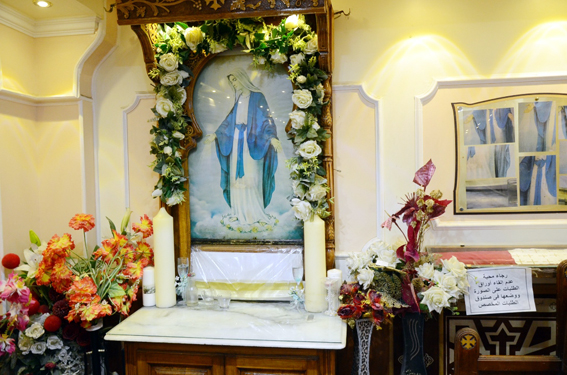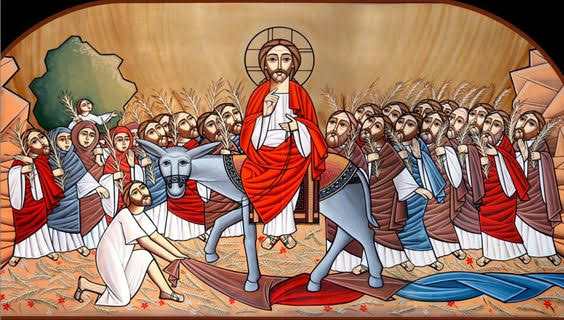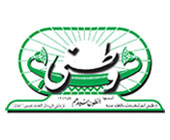The 4th-century church of Mar-Girgis (St George) in the Delta village of Sahragt (also pronounced Sahrajt) al-Kubra, some 78km north of Cairo, has celebrated a phenomenon that occurs once a year on 23 July. That date marks a feast of St George: the feast of bringing his relics into Egypt in the 15th century. The church is so designed that only on that morning every year the sun rays illuminate the altar of St George, entering through an aperture in the dome above the altar.
This year saw Anba Saleeb, Bishop of Mit Ghamr, Daqahliya in which Sahrajt is located, celebrate Mass on the altar as the sun lit it up. Joining Anba Saleeb was joined by only a limited number of priests and deacons, in respect for COVID-19 restrictions.
The church of Mar-Girgis in Sahrajt boasts three altars consecrated in the names of Mar-Girgis, the Holy Virgin, and Michael Archangel. Through apertures in the domes above each, sunlight illuminates each altar on the feast day of its patron saint. It shines on the altar of the Archangel Michael on his feast day of 19 June, St George’s on 23 July, and the Holy Virgin’s on the Feast of her Assumption on 22 August.
Abu Simbel and Kafr al-Deir
Mar-Girgis’s in Sahrajt is not the only church or building in Egypt where the sun rays illuminate a spot of the building on only a specific date or dates in the year. The phenomenon was known to Egyptians since ancient times, a prime instance famously occurring twice a year at the temple of Abu Simbel in Aswan. At sunrise, the sunrays enter the temple through an aperture above the doorway, and penetrate the length of the temple till they illuminate the face of the pharaoh Ramses the Great (1279 – 1213 BC) at the far end of the temple. The two dates the phenomenon occurs are 22 February and 22 October, coinciding with the dates of birth and enthronement of the Pharaoh.
The 4th-century church of Michael Archangel in the village of Kafr al-Deir, Minya al-Qamh, in the East Delta province of Sharqiya also witnesses this phenomenon twice every year; on 1 May on the Feast of the Martyrdom of Mar-Girgis, and on 19 June on the feast of Michael Archangel.
The Astronomy Department at the National Research Institute of Astronomy and Geophysics last year issued a certificate officially confirming the phenomenon that occurs every year at Kafr al-Deir’s Archangel Michael church.

Flat surface vs dome
During a recent conference on “Coptic Heritage between Tradition and Modernity”, hosted by Cairo’s Coptic Cultural Centre, Dr Sami Sabri, Dean of the Institute of Coptic Studies and Professor of Coptic Architecture, explained the phenomenon of sunlight illuminating a specific spot inside a building on a specific date and time, from an architectural point of view. He said that there were 23 ancient temples in Egypt in which this phenomenon occurs, but pointed out that it was structurally easier to align the sanctuaries with the sun in the ancient temples, since they are rectangular. It is much more difficult, he said, to adjust this in case of domes, and requires extensive astronomical studies and computations to precisely calculate the alignment of the spot required with the sun rays, so that they would fall on it only at the same date and same hour every year.
Dr Sabri listed the different types of church domes, explaining that the type of dome at Kafr al-Deir’s Michael Archangel church in Sharqiya is a Dome on Squinches. He said it was a structurally more critical process to open an aperture in the curved surface of a dome than in a flat structure such as a wall or roof, since an opening in a dome, if not done according to precise calculations and careful considerations, could weaken it considerably.

First drop
The feast on 19 June goes back to ancient Egypt, and celebrated the “first drop” of the Nile’s annual flood which came to inundate the land, endowing it with its legendary life-giving fertility and rendering agriculture, the main activity of the people, a major source of the country’s wealth. When Christianity came to Egypt at the hands of St Mark in the first century and was later embraced by the majority of Egyptians, the Coptic Church baptised the feast to celebrate Michael Archangel who was made patron saint of the Nile waters.

Watani International
25 July 2021
















